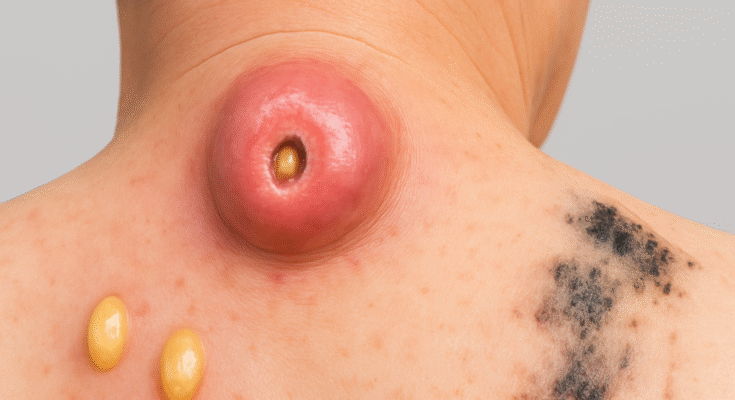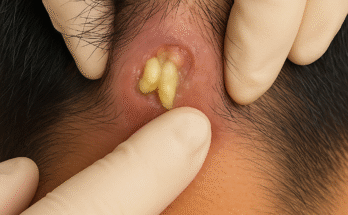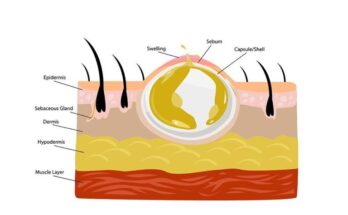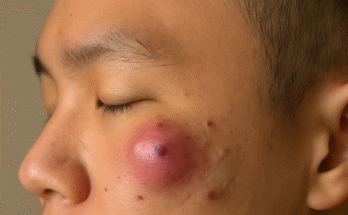The condition shown in the image appears to be a large, inflamed sebaceous cyst—also commonly referred to as an epidermoid cyst—that has become infected or severely irritated. These cysts are non-cancerous lumps that develop beneath the skin, typically when sebaceous glands (oil-producing glands) get blocked or damaged. They often appear on the back, neck, shoulders, or face and may remain small and painless for a long time. However, when bacteria enter the cyst, it can become red, swollen, tender, and filled with pus, leading to the kind of inflamed appearance seen here.
Sebaceous cysts are usually filled with keratin, a thick, cheese-like substance produced by skin cells. Infected cysts, like the one in the image, may ooze foul-smelling discharge and become increasingly painful. The bulge can be alarming in size and may cause discomfort not only due to pressure but also due to inflammation and infection.
People often develop these cysts due to blocked pores, skin trauma, or underlying skin conditions like acne. While they’re usually benign and not dangerous, large or infected cysts should be evaluated and treated by a medical professional. Treatment typically involves draining the cyst or performing minor surgery to remove the cyst wall entirely to prevent recurrence.
Ignoring an infected cyst can lead to complications like abscess formation or even deeper skin infections, which may spread if not addressed promptly. That’s why it’s important to resist the urge to pop or squeeze it at home—doing so can worsen the infection or leave a permanent scar.
If you notice a lump under your skin that’s growing, becoming painful, or changing in appearance, it’s best to consult a dermatologist or healthcare provider. With proper care, most cysts can be treated easily, restoring both comfort and peace of mind.



